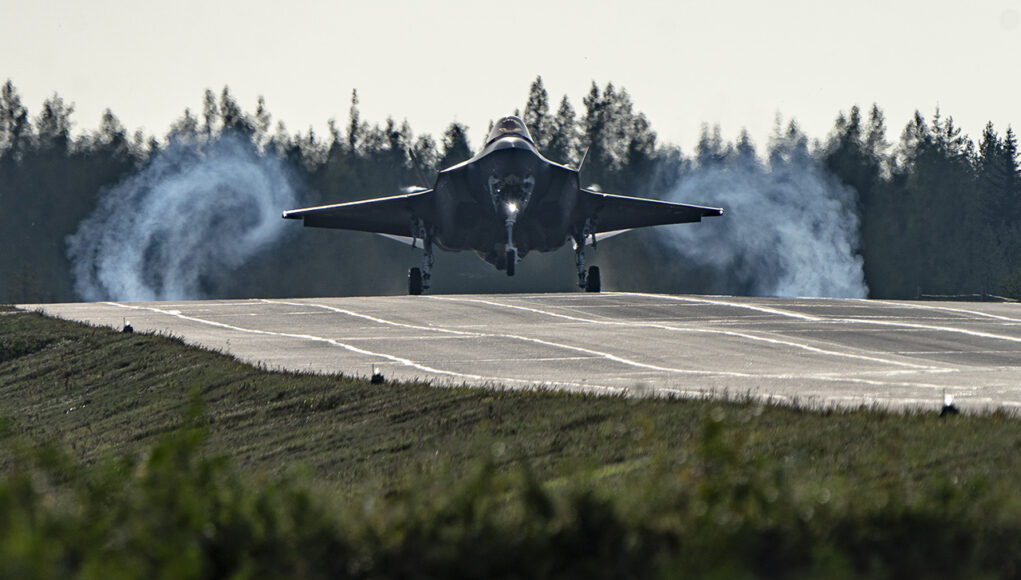In a first for US military aviation, two F-35 Lightning II fighter jets from the 48th Fighter Wing at RAF Lakenheath in the UK landed on an adapted Finnish highway as part of exercise BAANA 2024.
The manoeuvre on the Hosio Highway strip in Ranua, Finland, marks the first time American F-35s have landed on a European highway.
The exercise is part of the US Air Force’s Agile Combat Employment (ACE) concept, designed to improve NATO forces’ ability to deploy quickly and operate from less traditional locations in high-stress scenarios.
By practising landing and taking off from a highway, US and Finnish forces tested their preparedness to function in more austere conditions, expanding both nations’ operational toolkits.
General James Hecker, Commander of US Air Forces in Europe and Air Forces Africa, said, “The successful first-ever landing of our fifth-generation F-35 on a highway in Europe is a testament to the growing relationship and close interoperability we have with our Finnish allies.”
He added that this kind of exercise “improves our ability to rapidly deploy and employ airpower from unconventional locations and reflects the collective readiness and agility of our forces.”
Since joining NATO in 2023, Finland has played a key role in enhancing the alliance’s regional capabilities. Known for its experience in operating from rugged environments, Finland’s involvement is seen as crucial for the wider NATO effort to prepare for potential conflicts that might require unconventional military strategies.
Finnish air force pilots have long practised landing on highways, a necessity given the country’s landscape and its strategy of decentralised military operations.
BAANA 2024 builds on that expertise, offering a valuable opportunity for US pilots to learn from their Finnish counterparts.














It is clear that in the age of guided weapons, airbases cannot survive.
The Israeli 67 attack against Egypt, Syria airbases now could be done with missiles.
Due to entrenched Western love with aircraft, i am afraid this time it will be the other side doing something like that.
maybe major roads everywhere will need a landing lane.
Guided weapons affect the survivability of everything, not just airbases. The trick is to not be caught off-guard like Egypt and Syria were. Even if Russia did somehow have the stockpiles to launch a massed attack against European airbases, it would be detected and largely intercepted long before any missiles touch down.
Not the same.
Airbases are fixed everyone know where they are.
Explain to me what are the missile defences in Europe and what they can cover?
Road doesn’t look that flat either.
maybe somebody will come up with a new roadside sign😁
Genuine question (and I’m actually a fan of F35) – when it’s forward deployed, how does its centralised Just In Time logistics and parts system work?
It seems like it would kind of hamstring it a little bit. my understanding is that it’s more like taking a Tesla that’s broken and trying to fix it rather than a Defender 110 that you can basically botch with sniper tape.
Give way to oncoming Fighter Jets 🙂 – gonna need to raise barrier heights at KFC and McDonalds….